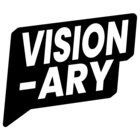Hello fellow knowledge managers, documentation specialists, and Guru champions!
Our company is revisiting it’s strategy with our technical documentation, particularly looking in to how we can have an effective tagging strategy (determining those attributes to tag) and reconsidering how our content is organized across team collections. Are there any tech company folks who are happy with how they are tackling their technical documentation that might be up for a conversation (a good old fashion knowledge transfer)?
Mentioning broadly 😬
Best practices for organizing technical content????
Best answer by brookethebatman
Hey Lynn,
I think if you’re considering reorganizing your content across collections and better understanding tagging, you may benefit from a bit of research into Information Architecture (IA) if you haven’t already.
IA covers how to organize information, content analysis, categories and labels, site structure, navigation and wayfinding, and tags and taxonomies. I’ve found it extremely helpful in figuring out the structure of content and validating that structure, as well as determining the approach for tagging for many projects now. Linking some helpful resources for you to get started:
- [Book] Everyday Information Architecture - this one has a case study with a website being redesigned so you can see how IA is implemented from start to finish
- [Book] Information Architecture: For the Web and Beyond
- [Book/Website] How to Make Sense of Any Mess
- [Blog Post] How to organize your docs for the first time… or again - A blog post I wrote awhile back. There’s one section in there on card sorting that I would highly recommend you check out (links are in the blog post as well). Card sorting exercises can be used for both info architecture + tagging in your case.
That said, I think the biggest piece of advice that’s worked well for me and may work well for others like yourself, is to just ensure that whatever structure you set in place, you document the best practices (e.g., how will the new tagging system work? where will new content fit in? when will new categories/collections be spun up?), set up a feedback loop so you can monitor the effectiveness of your tagging + new structure, and of course, implement any changes that are required that arise from your feedback loop.
This should hopefully lead to healthy and trusted documentation that works as effectively as possible for your users, and be easy to manage for folks contributing to it (this is where the best practices/style guide comes in handy!).
Hope this helps! Super curious to hear how other folks are approaching this issue and if there are any new suggestions I haven’t considered as well.
Enter your E-mail address. We'll send you an e-mail with instructions to reset your password.


